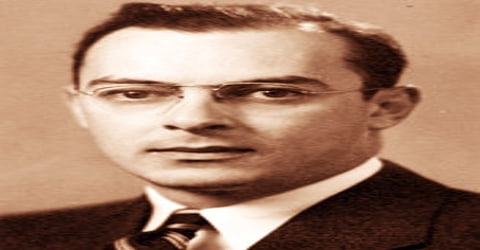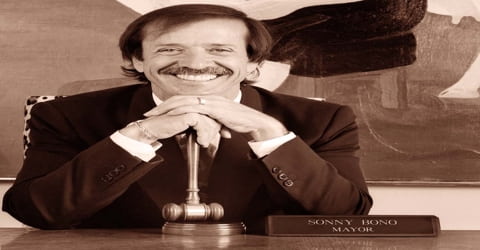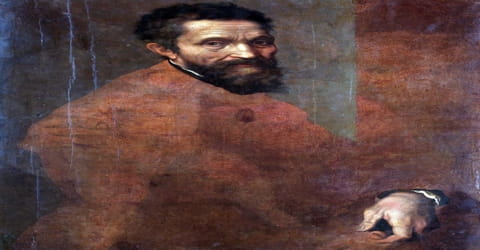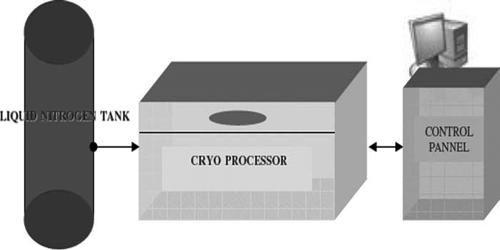Biography of John Bardeen
John Bardeen – American physicist and electrical engineer.
Name: John Bardeen
Date of Birth: May 23, 1908
Place of Birth: Madison, Wisconsin, United States
Date of Death: January 30, 1991 (aged 82)
Place of Death: Boston, Massachusetts, United States
Occupation: Physicist
Father: Dr. Charles Russell Bardeen
Mother: Althea Harmer Bardeen
Spouse/Ex: Jane Maxwell (m. 1938)
Children: James M. Bardeen, William A. Bardeen, Elizabeth Greytak
Early Life

An American physicist who was co-winner of the Nobel Prize for Physics in both 1956 and 1972, John Bardeen was born on May 23, 1908, in Madison, Wisconsin, the U.S. He shared the 1956 prize with William B. Shockley and Walter H. Brattain for their joint invention of the transistor. With Leon N. Cooper and John R. Schrieffer, he was awarded the 1972 prize for the development of the theory of superconductivity.
A qualified electrical engineer, Bardeen also propounded a fundamental theory of conventional superconductivity along with physicists Leon N Cooper and John Robert Schrieffer. His inventions in the field of physics led to a revolution in the electronics industry as it was the transistor that paved the way for further research and development in information and communication technology. His contributions to the scientific world are of immense significance and he was counted among LIFE Magazine’s list of “100 Most Influential Americans of the Century” in 1990. Even as a young boy Bardeen was exceptionally intelligent and performed brilliantly at school. Tragedy struck when his mother became ill with cancer and died leaving him heartbroken. His father quickly remarried adding to the boy’s unhappiness. Nonetheless, he faced this tragedy bravely and went on to study engineering. It was while working at Bell Labs that he invented the transistor along with some colleagues which led to his first Nobel Prize victory. A few years later he again won the Nobel Prize for his theory of superconductivity. He is among the only four people to win the coveted prize twice.
Childhood, Family and Educational Life

An eminent American physicist, John Bardeen was born on 23 May 1908, in Wisconsin, as the second son of Dr. Charles Russell Bardeen and his wife Althea Harmer Bardeen. He father was the dean of the University of Wisconsin medical school while his mother too was an educated woman who had studied at the Pratt Institute in Brooklyn. Bardeen’s brilliance was evident from a young age. He was so intelligent for his age that his parents decided to have him skip several grades at school. His mother became ill with cancer when he was 12. His father did not tell the boys that their mother was dying and John was shocked when she died. His father, in an attempt to provide the boys with a normal family life, quickly remarried. Even though shattered by his mother’s death and father’s remarriage, he somehow faced the situation with courage, focusing on his studies.’
Bardeen attended the University High School at Madison. He graduated from the school in 1923 at age 15. While in college, he joined the Zeta Psi fraternity. He raised the needed membership fees partly by playing billiards. He was initiated as a member of Tau Beta Pi engineering honor society. He chose to engineer because he did not want to be an academic like his father. He also felt that engineering had good job prospects.
Bardeen earned his B.S. in electrical engineering in 1928 and M.S. the very next year. He had chosen to engineer as he felt this field held promise. He took all the graduate courses in physics and mathematics that had interested him, and he graduated in five years instead of the usual four. Bardeen furthered his studies by staying on at Wisconsin, but he eventually went to work for Gulf Research Laboratories, the research arm of the Gulf Oil Corporation that was based in Pittsburgh.
As a graduate student, Bardeen studied mathematics and physics. Under physicist Eugene Wigner, he ended up writing his thesis on a problem in solid-state physics. Before completing his thesis, he was offered a position as Junior Fellow of the Society of Fellows at Harvard University in 1935. He spent the next three years there, from 1935 to 1938, working with to-be Nobel laureates in physics John Hasbrouck van Vleck and Percy Williams Bridgman on problems in cohesion and electrical conduction in metals, and also did some work on the level density of nuclei. He received his Ph.D. in mathematical physics from Princeton in 1936.
Personal Life
John Bardeen married Jane Maxwell on July 18, 1938. While at Princeton, he met Jane during a visit to his old friends in Pittsburgh. They had three children, James Maxwell, William Allen, and Elizabeth Ann. Bardeen was a very devoted family man.
In spite of all his professional achievements, Bardeen was a very simple and unassuming person. He was a good-natured and friendly man who loved playing golf. Bardeen was a scientist with a very unassuming personality. While he served as a professor for almost 40 years at the University of Illinois, he was best remembered by neighbors for hosting cookouts where he would prepare food for his friends, many of whom were unaware of his accomplishments at the university. He would always ask his guests if they liked the hamburger bun toasted (since he liked his that way).
When Bardeen was asked about his beliefs during a 1988 interview, he responded: “I am not a religious person, and so do not think about it very much”. However, he has also said: “I feel that science cannot provide an answer to the ultimate questions about the meaning and purpose of life.” Bardeen did believe in a code of moral values and behavior. John Bardeen’s children were taken to church by his wife, who taught Sunday school and was a church elder. Despite this, he and his wife made it clear that they did not have faith in an afterlife and other religious ideas.
Career and Works

John Bardeen moved to Pittsburgh in 1930 to work for the Gulf Research Laboratories, the research arm of the Gulf Oil Corporation. He worked there as a geophysicist till 1933. He wanted to further his studies and applied to the graduate program in mathematics at Princeton University where he studied both mathematics and physics as a graduate student. He was still writing his thesis under physicist Eugene Wigner when he was offered a position as Junior Fellow of the Society of Fellows at Harvard University in 1935. In 1935, he started working with the eminent physicists John Hasbrouck van Vleck and Percy Williams Bridgman on problems in cohesion and electrical conduction in metals.
Bardeen earned bachelor’s and master’s degrees in electrical engineering from the University of Wisconsin (Madison) and obtained his doctorate in 1936 in mathematical physics from Princeton University. A staff member of the University of Minnesota, Minneapolis, from 1938 to 1941, he served as a principal physicist at the U.S. Naval Ordnance Laboratory in Washington, D.C., during World War II.
In October 1945, Bardeen began work at Bell Labs. He was a member of a solid-state physics group, led by William Shockley and chemist Stanley Morgan. Other personnel working in the group were Walter Brattain, physicist Gerald Pearson, chemist Robert Gibney, electronics expert Hilbert Moore, and several technicians. He moved his family to Summit, New Jersey.
By the winter of 1946, they had enough results that Bardeen submitted a paper on the surface states to Physical Review. Brattain started experiments to study the surface states through observations made while shining a bright light on the semiconductor’s surface. This led to several more papers (one of them co-authored with Shockley), which estimated the density of the surface states to be more than enough to account for their failed experiments. The pace of the work picked up significantly when they started to surround point contacts between the semiconductor and the conducting wires with electrolytes. Moore built a circuit that allowed them to vary the frequency of the input signal easily and suggested that they use glycol borate (gu), a viscous chemical that didn’t evaporate. Finally, they began to get some evidence of power amplification when Pearson, acting on a suggestion by Shockley, put a voltage on a droplet of gu placed across a p–n junction.
Bardeen developed an interest in semiconductor research and collaborated with Brattain and Shockley to discover the transistor effect in semiconductors in 1947. His efforts laid the foundation for the modern age of electronics and computers and earned a share of the 1956 Nobel Prize for Physics along with fellow scientists William B. Shockley and Walter H. Brattain.
In the early 1950s, Bardeen resumed research he had begun in the 1930s on superconductivity, and his Nobel Prize-winning investigations provided a theoretical explanation of the disappearance of electrical resistance in materials at temperatures close to absolute zero. The BCS theory of superconductivity (from the initials of Bardeen, Cooper, and Schrieffer) was first advanced in 1957 and became the basis for all later theoretical work in superconductivity. Bardeen was also the author of a theory explaining certain properties of semiconductors.
Bardeen was offered $10, 000 a year by the University of Illinois at Urbana-Champaign in 1951 which he accepted after leaving Bell Labs. He assumed the position of Professor of Electrical Engineering and of Physics. He established major research programs in the Electrical Engineering Department and Physics Department. His first research student was Nick Holonyak who eventually went on to invent the first LED. He became the Professor Emeritus at Illinois in 1975. Throughout his life, he remained involved in academic research.

There, John Bardeen worked with Cooper and Schrieffer to formulate the first successful microscopic theory of superconductivity, which was later termed as the BCS theory (Bardeen-Cooper-Schrieffer theory). They received the Nobel Prize in Physics for this theory in 1972. Bardeen was awarded the Nobel Prize twice for his efforts, and he remains the only person in history to have two prizes in the same domain. He revolutionized the fields of electrical engineering and solid state physics. The transistor is often recognized as the most influential invention of the twentieth century.
John Bardeen was also an important adviser to Xerox Corporation. Though quiet by nature, he took the uncharacteristic step of urging Xerox executives to keep their California research center, Xerox PARC, afloat when the parent company was suspicious that its research center would amount to little.
Awards and Honor
In 1956, John Bardeen shared the Nobel Prize in Physics with William Shockley of Semiconductor Laboratory of Beckman Instruments and Walter Brattain of Bell Telephone Laboratories “for their researches on semiconductors and their discovery of the transistor effect”.
Bardeen was awarded the Nobel Prize in Physics once more in 1972, this time shared with Leon N Cooper and John Robert Schrieffer “for their jointly developed theory of superconductivity, usually called the BCS-theory”. He is the only person to have won the Nobel Prize in Physics twice.
Bardeen was honored on March 6, 2008, United States postage stamp as part of the “American Scientists” series designed by artist Victor Stabin.
Death and Legacy
John Bardeen died of heart disease at age 82 at Brigham and Women’s Hospital in Boston, Massachusetts, on January 30, 1991. Although he lived in Champaign-Urbana, he had come to Boston for medical consultation. Bardeen and his wife Jane (1907-1997) are buried in Forest Hill Cemetery, Madison, Wisconsin. They were survived by three children, James, William and Elizabeth Bardeen Greytak, and six grandchildren.
Bardeen played a pivotal role in the development of the transistor along with Walter Brattain and William Shockley. The transistor became the primary building block of various other electronic devices and led to more research and development in the field of electronic communication.
In honor of Professor Bardeen, the engineering quadrangle at the University of Illinois at Urbana-Champaign is named the Bardeen Quad. Also in honor of Bardeen, Sony Corporation endowed a $3 million John Bardeen professorial chair at the University of Illinois at Urbana-Champaign, beginning in 1990. SONY Corporation owed much of its success to commercializing Bardeen’s transistors in portable TVs and radios and had worked with Illinois researchers. The current John Bardeen Professor is Nick Holonyak, Bardeen’s doctoral student and protege.
John Bardeen was named by Life Magazine among the 100 most influential people of the twentieth century.
Information Source:
















